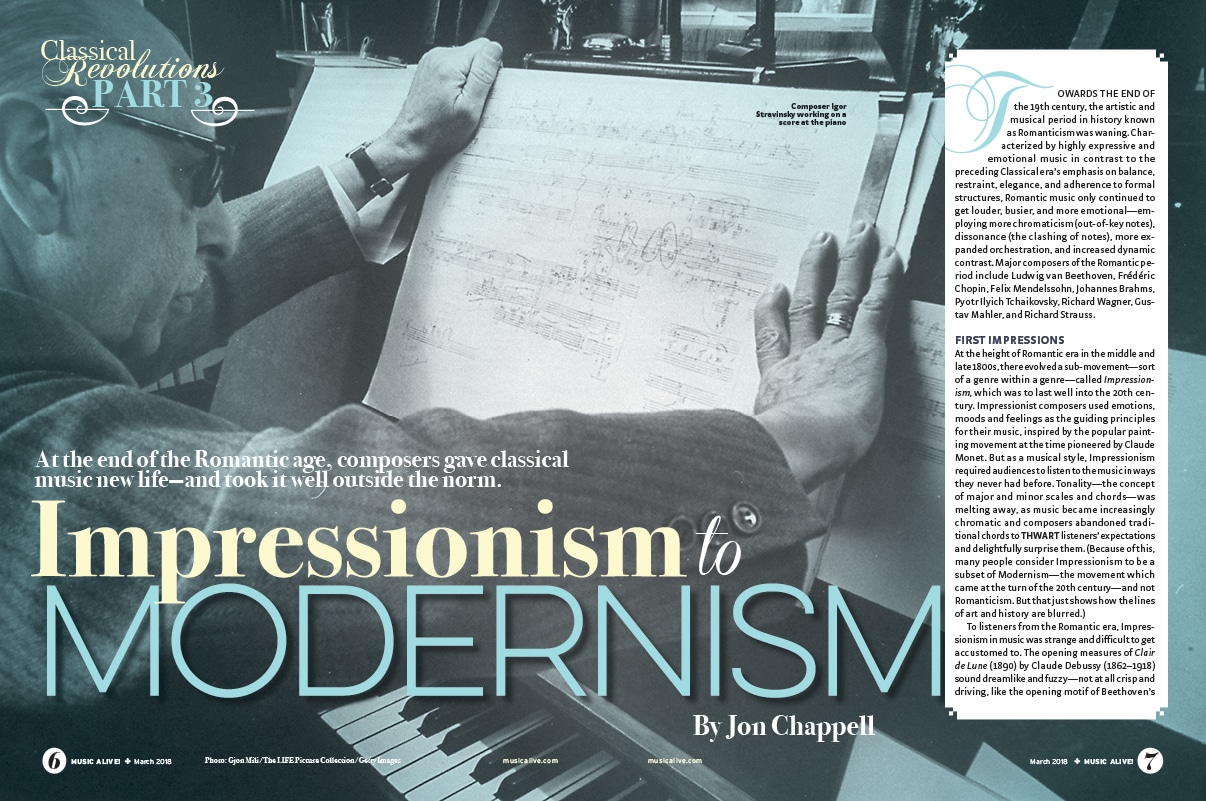In the turn of the 20th century, classical music underwent another dramatic change—and Modernism was born.
Towards the end of the Romantic era (the late 19th century), Romantic composers began taking the styles that had been developed over the course of the 1800s—emotional depth, technical and dynamic range, programmatic themes, and experiments with tonality—and pushing them further. From this came Impressionism, a subset of Romanticism that was even more abstract, dreamlike, and even freer of the structure expected of earlier classical music.
Soon, this gave way to a complete abandonment of the standard approach, in particular with the work of the Austrian Arnold Schoenberg, and his system of serialism. By taking a purely systemized, technical approach to composition, Schoenberg challenged the establishment, listeners, and music in general. His innovation eventually gave way to composers such as Igor Stravinsky, Edgard Varése, Béla Bartók, Anton Webern, and Alban Berg. At its heart, Modernism was experimental, and its adventurous approach allowed classical music to branch off in boundless directions.
Listen to more Modernist compositions below.
Igor Stravinsky – Firebird Finale
Béla Bartók – Sonatina
John Cage – Sonata V (from Sonatas and Interludes) – an example of late Modernism


